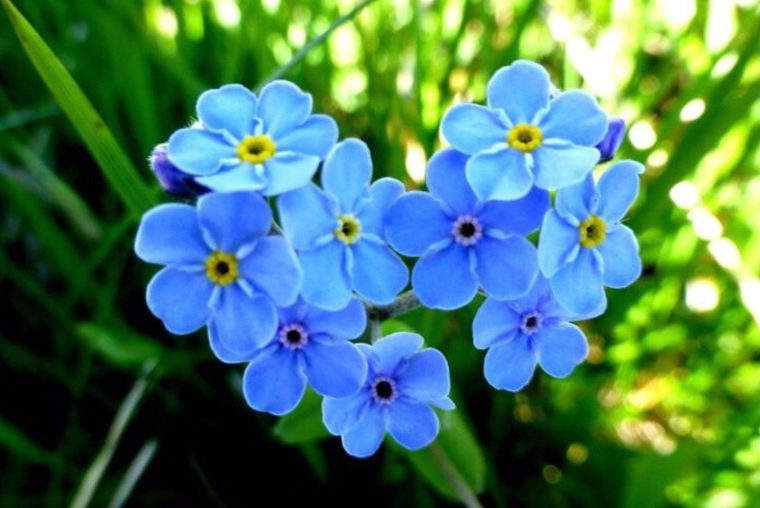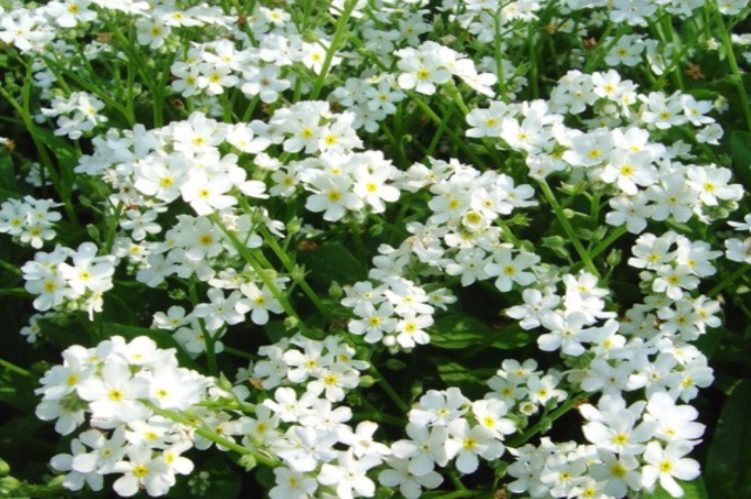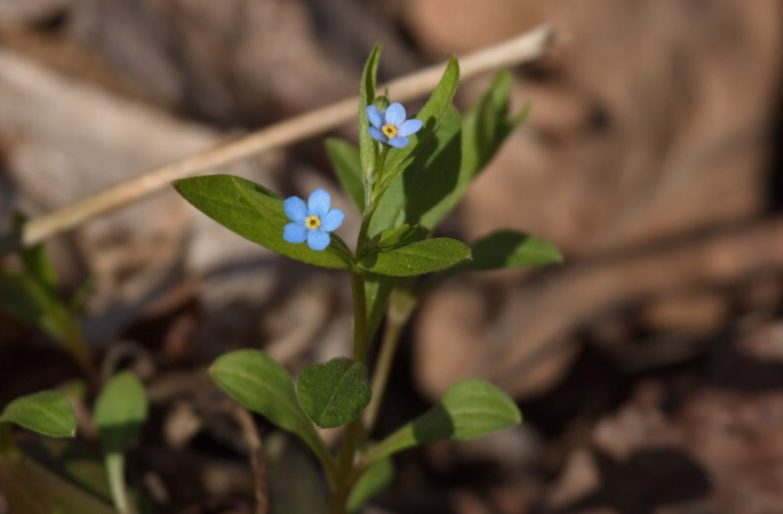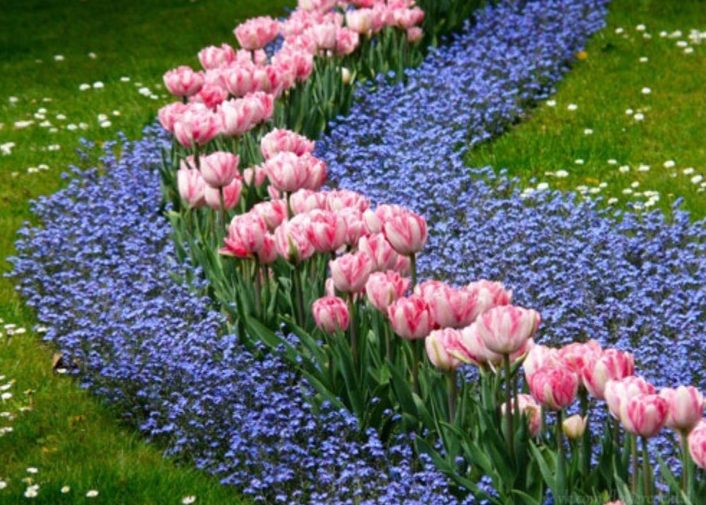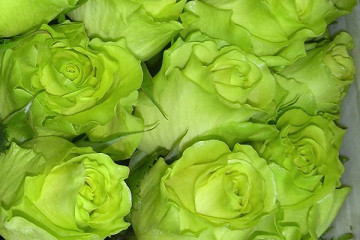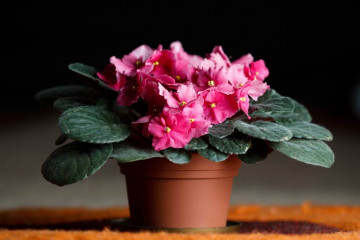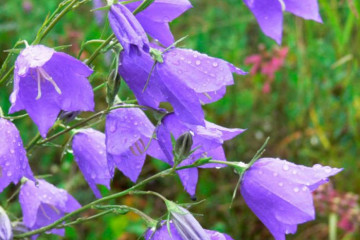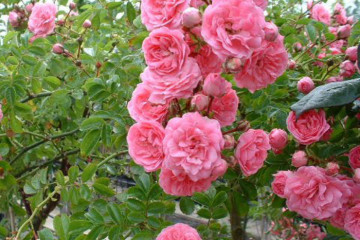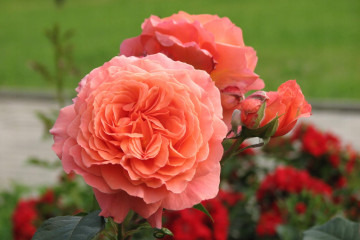Forget-me-not flower - description and characteristics of the plant
Content:
Almost all women on our planet are partial to flowers. Someone likes strict tulips, someone loves gorgeous roses or exotic orchids. How many people - so many tastes. But in nature there is a flower that will attract everyone's attention. These are forget-me-nots, like drops of the sky with the sun inside, with a subtle and delicate aroma.
History of origin and appearance
Where the plant came from is hard to say. In one source, the homeland of forget-me-nots is called the Alps (Switzerland), in another - some regions of northern Europe. This type of plant grows on almost all continents (Asia, Europe, South America, North America and Australia), in areas with a humid climate. In nature, a blue carpet of forget-me-nots can be found on sunny meadows, on the banks of rivers and streams, and even in swamps.
There are many stories and legends about the origin, each country has its own, and all tell about love, fidelity and parting with beloved ones.
By the name alone, you can already understand what a forget-me-not flower looks like - having seen it once, it is impossible to forget its gentle blue.
Forget-me-not flowers: plant appearance
Forget-me-not belongs to the genus of herbaceous plants of the Burachnikov family. The flower grows up to 30 - 35 centimeters, perennial, with branched stems and small flowers, collected in inflorescences. The flowers themselves are pale blue, pink and even white.
History of the name
Forget-me-not is a flower of forests, gardens and front gardens, small and delicate with petals the color of the sky and a sunny heart. It is also called "mouse's ear", this is how "Myosotis" is translated from Latin. Popular names are as follows:
- gourd;
- febrile grass;
- good-looking.
According to legend, Flora, the goddess of the entire plant world, did not notice the small flower and forgot to give it a name. Unnoticed, he got scared and began to quietly repeat: “Do not forget me!” Having heard this, Flora, smiling, gave him a name - Forget-me-not. Since then, people began to claim that he has the ability to bring back forgotten memories. But this is just a legend.
It is not known exactly why forget-me-not is called that, but from almost all languages the name has the same translation, and means: "Do not forget me, please!".
The flowering period lasts almost five months, from May to the end of September, it all depends on the variety.
Types and varieties
In the genus, there are more than 45 types of flowers, mostly many of them are forest, found all over the planet. But the most popular are: swamp forget-me-not, forest forget-me-not and alpine garden forget-me-not. These types of plants are most often found in the front gardens of private houses and in public parks.
Forget-me-not marsh
A plant that reaches a height of up to 30 centimeters, with branching tetrahedral shoots. Differs in unpretentiousness and abundant long flowering (May-September). During this period, after the flowering of the shoot, a new one appears, replacing the dead one.
Forget-me-not field
It is considered a biennial or annual weed, growing up to 60 centimeters, with small flowers on leafless gray racemes.Distributed in almost all southern, western and eastern parts of Russia.
Forget-me-not creeping
Grows in the arctic parts of the Northern Hemisphere. Thanks to the hairy cover of the shoots, it protects itself from the cold. The color of the petals of the plant is compared to sapphires.
Forest
You can meet this two-three-year-old plant in the Carpathians, in the European part of Russia and in the Caucasus. It prefers to grow in damp meadows, forests, mountains, with sufficient moisture. Forest forget-me-not flowers of blue tones with oblong and pointed petals. The flowering period is short: May-June.
Alpine forget-me-not
An unpretentious mountain flower grows in nature in the mountain system of the Alps, Carpathians and the Caucasus. The mountain "fairy" loves light and is not afraid of stony soils. A herbaceous bush from 5 to 15 centimeters with green-silvery large leaves and inflorescences located on them with bright blue, purple, white or pink flowers. The beauties of the mountains will delight all lovers of wild beauty, the main thing is not to miss the moment when forget-me-nots are blooming. It blooms for only 40-50 days.
Forget-me-not pink
Another perennial representative of the Borachnikovye family with dark pink flowers. Loves semi-shaded areas with fertile soil, moderate moisture. It tolerates drought and frost.
Forget-me-not white
Early flowering spring plant. A kind of Alpine forget-me-not, only the color of the flower petals is white.
May Queen, a symbol of forests and meadows, with a fragrant aroma - forget-me-not. It is also called a sign of the coming spring due to early flowering. Everyone dreams of having a blue carpet of wild flowers in their front garden, but flower gardens and gardeners most often grow its hybrid varieties.
You can cultivate flower beds and garden plots with the help of garden forget-me-not, making a dense floral carpet of attractive flowers of a delicate color. Recently, this particular variety is the most popular, due to its unpretentiousness and endurance.
It is advisable to grow flowers for two years, in the third year their strong growth occurs, decorativeness is lost: the flowers become small and rare, and the stems are strongly stretched and lie on the soil.
Forget-me-not small-flowered
A small annual representative of its species 3-15 centimeters, with flowers directed upwards.
Rare-flowered
It differs from its relatives in a small number of lonely inflorescences. Above the oval oblong leaves, slightly rough, there are small petals of pale blue almost white flowers.
Planting forget-me-nots in open ground
There is no particular difference between the plantings of the species, it may only require different care. Shade-loving forget-me-nots will be uncomfortable in direct sunlight, and vice versa, varieties that feel great in the sun fade faster, being out of place.
First you need to prepare the ground:
- Find a suitable landing site.
- Remove weeds.
- Fertilize unfavorable soil with mineral additives in the fall.
Growing from seeds
The plant is planted with seeds in May-June in specially prepared greenhouse places, and at the end of August or at the beginning of September (if autumn is late), a transplant is carried out, where forget-me-nots will grow constantly. No need to worry, thanks to the superficial fibrous root system, even flowering specimens can be transplanted.
The indentation for the seeds should be small - 1-2 centimeters, leave a row spacing of about 30 centimeters.Thin seedlings later, leaving the gap the same.
Growing seedlings
There are two types of planting: spring and autumn. In the spring, seedlings are planted in the soil with buds already set, if they want to bloom this year, in April. The process is simple: seedlings are lowered into the holes with water and covered.
In the fall, they are planted in open ground in order to see the delicate plant blooming in the spring, they are mulched with peat and covered with large frosts.
Optimal drop-off location
Not all varieties feel comfortable in the same place. The swamp forget-me-not will lose color and wither in a sunny place, and the alpine one will die in the shade. Forest forget-me-not is an unpretentious plant, partial shade is better for it, but in full shade and in the sun it will delight with beautiful coloring of flowers and brightness of leaves.
Feeding forget-me-nots
Three times application of top dressing in the soil will be enough. Also:
- before flowering, young forget-me-nots should be fertilized using mineral fertilizers;
- in the fall you will need organic and mineral feeding;
- in the spring, a little peat and humus are introduced into the soil.
Preparing for winter
To ensure a safe wintering, no special efforts are required. Forget-me-nots endure cold snaps. But in case of severe frosts and the absence of a natural cover (snow), it is necessary to cover the flower beds.
Reproduction
There are three breeding methods:
- seeds;
- cuttings;
- dividing the bushes.
To check the quality of the seeds, you can dip them in salted water, if they float up, then they are not suitable for planting. Although this is not enough when required, because forget-me-nots reproduce successfully by self-seeding. You just need to plant a few flowers in the right place, and in the future there will be a glade.
If we are talking about varietal forget-me-nots, then it is better to propagate them by cuttings. At the beginning of summer, cuttings of about 5 cm are cut off. They must be planted together with the germinated seedlings.
Diseases and pests
Proper watering and care is the key to healthy plant growth and prevention from diseases and pests. But it is still susceptible to powdery mildew and root rot.
Copper oxychloride will help get rid of gray rot, and drugs sold in specialized stores or folk methods will help get rid of aphids and cruciferous fleas. With powdery mildew, it is worth spraying flowers less often and ensuring good air circulation (if it is a greenhouse) by treating with biological fungicides.
Use cases in landscape
Forget-me-nots are very common in Europe. Europeans love to use them in garden compositions along with tulips and daffodils. Near the reservoir, forget-me-nots look especially impressive. On a personal plot, they can find their place in a curb flower garden and in the shade of gardens. In the city, the plant can often be seen in a pot on the balcony.
Thus, a seemingly miniature ordinary flower, symbolizing eternal love, fidelity and memory, is unpretentious, and this has earned it popularity among flower growers around the world.

